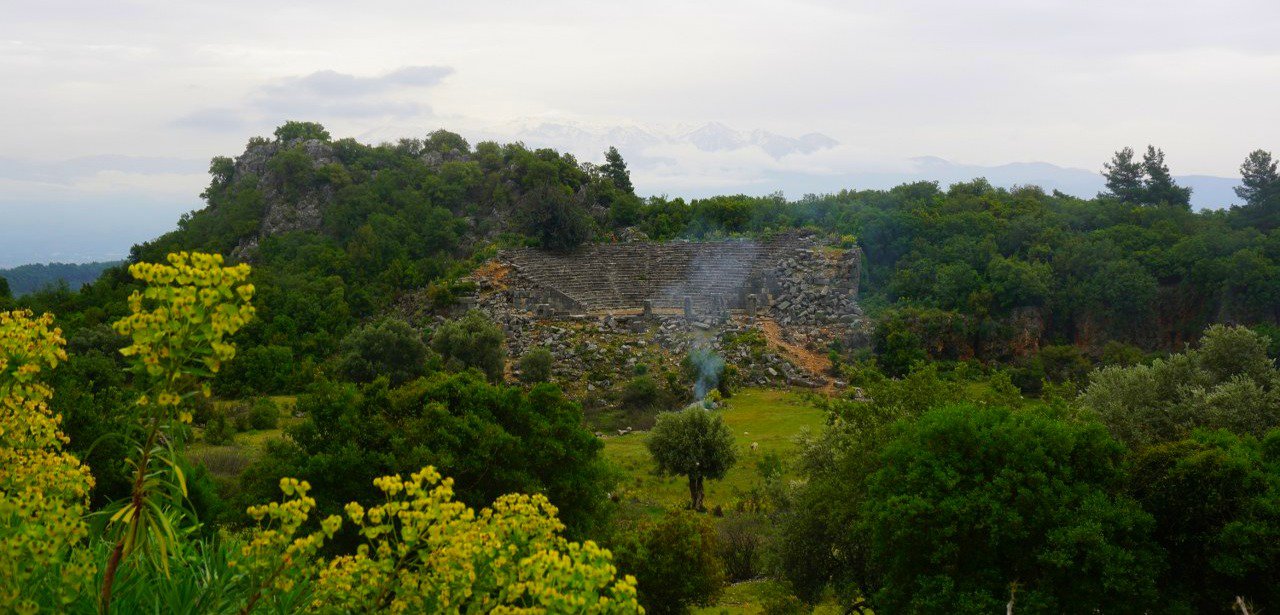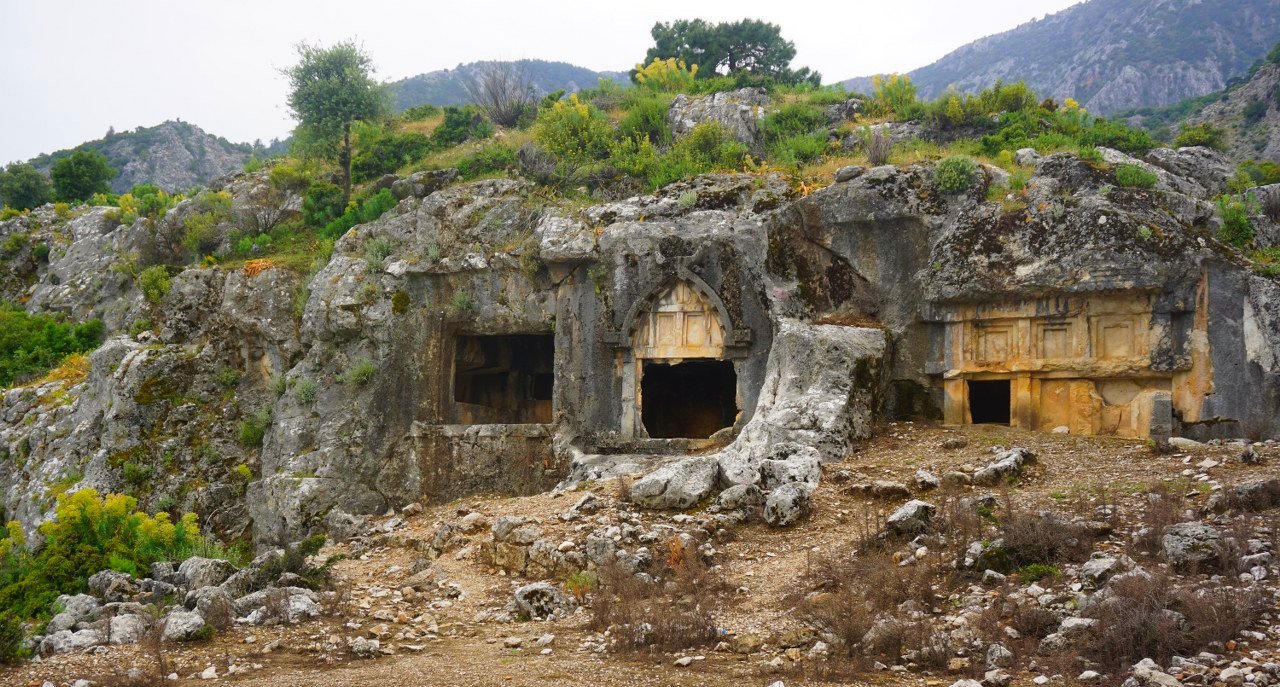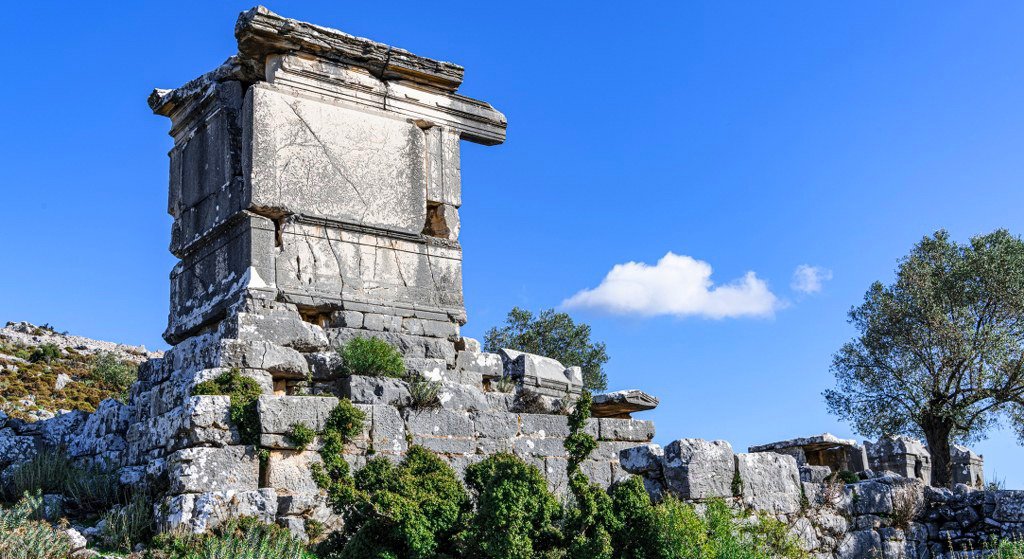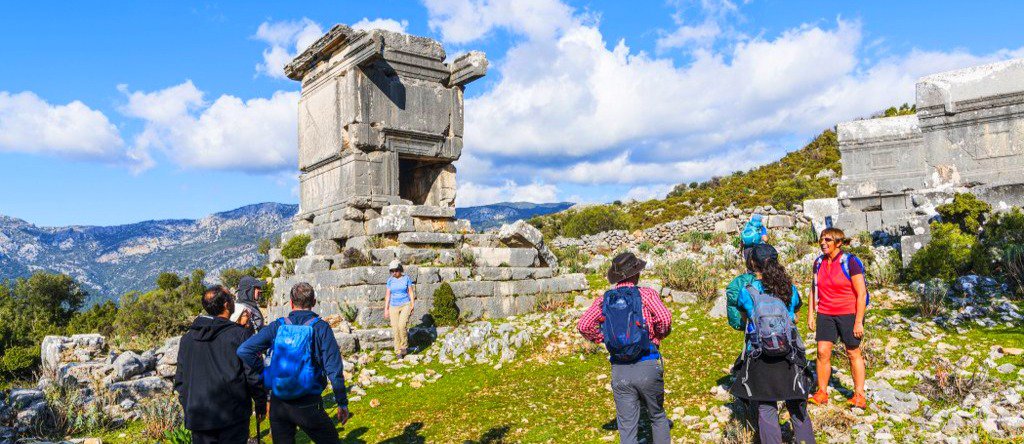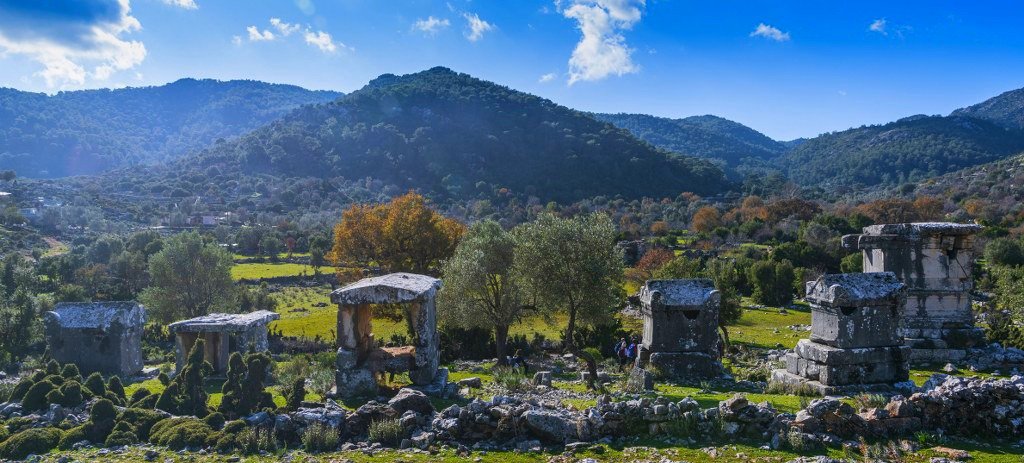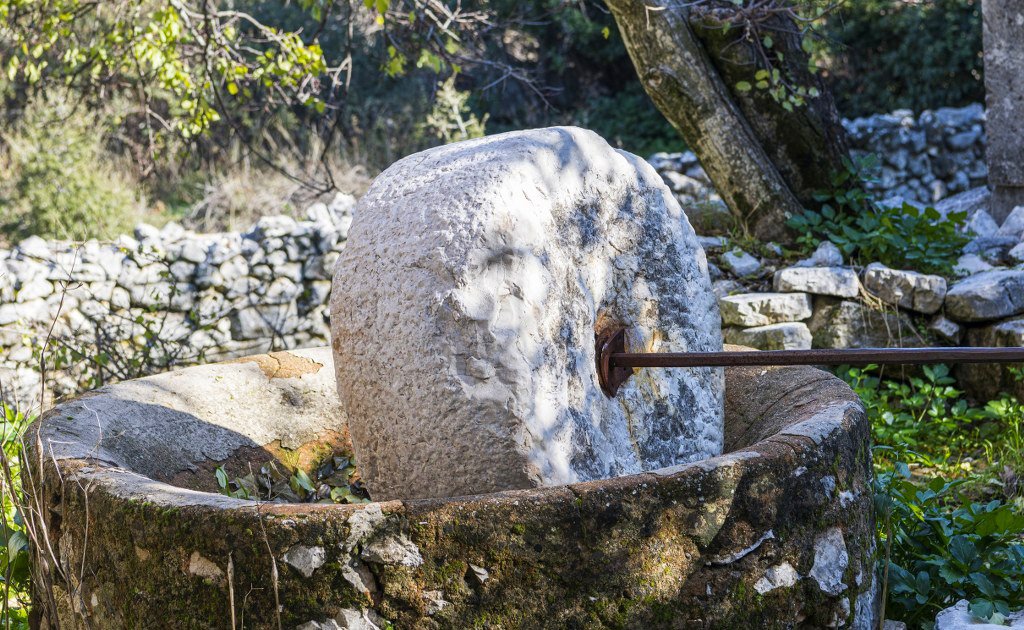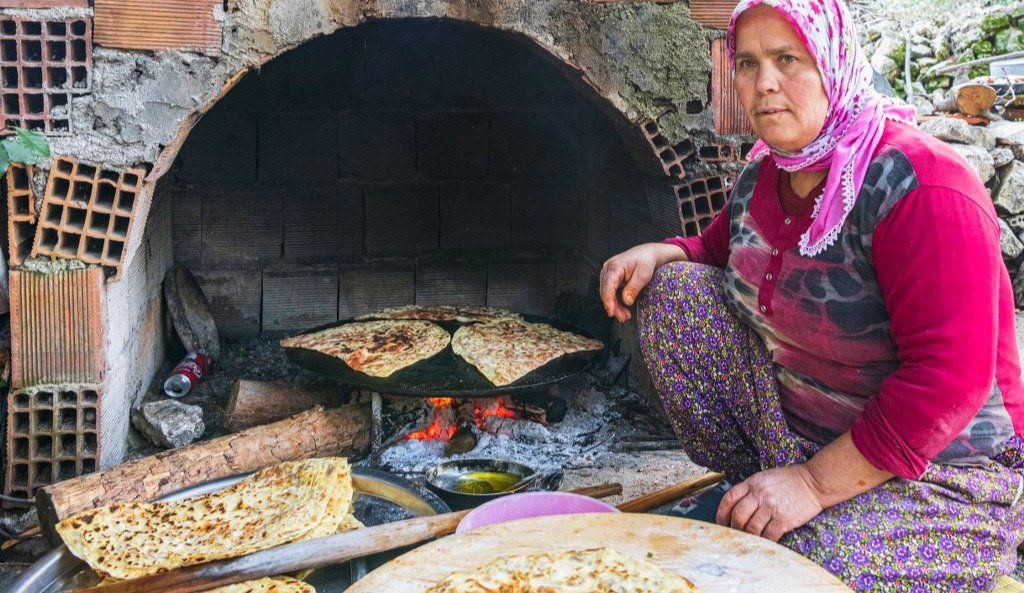Sidyma Pinara Tour
 Initial region
Fethiye
Initial region
Fethiye
 Duration
1 Day
Duration
1 Day
 Language
English
Language
English
 Price
€ 390 / person
Price
€ 390 / person
- Sydima
- Pinara
- Lunch in Minare
We meet you in the reception of your hotel or in a meeting point specified by you at 9.30 am.
We drive to Pinara Ancient City firstly. After driving up the twisting road to Pinara. A small walking path takes you to the entrance of the cities’ necropolis, hidden behind a forest that could easily compete with an Alice in Wonderland set.
What follows is a sequence of magnificent views, profound impressions, and continued surprises as we work our way up the mountain. Pinara combines breathtaking panoramas over Xanthos valley with the remains of temples, a theater and hundreds of tombs. The setting is stunning; with wildflowers, ancient olive and fig trees, and pines filling the air with their fragrance.
Pinara was a large city of ancient Lycia at the foot of Mount Cragus (now Mount Babadağ), and not far from the western bank of the River Xanthos, homonymous with the ancient city of Xanthos (now Eşen Stream).
The remains of several ancient temples can be seen in Pinara, as well as rock tombs including one "royal tomb", an upper and a lower acropolis, a theatre, an odeon, an agora and a church.
The name Pinara has somewhat been assimilated to the name of the present-day village of Minare, half an hour below the ruins and depending Fethiye district of Muğla Province, Turkey.
We will have lunch in a village house in Minare Village
This lucnch is chosen always the best lunch of Turkey in our tours and highly recommended
In the afternoon we continue to Sidyma.
The serenity of untouched site Sidyma.
Sidyma is untouched. The only thing that has changed is that people came back and started living on the abandoned site. Other than that, there are no ongoing or past excavations, no restorations, and no facilities. Only nature, history, and today’s village life in Turkey. Apart from one still standing structure with a 9m high wall, you won’t see any significant buildings here. The city used to have a castle and a (not very well preserved) theatre in its glory days, but today, the main attractions are the many Sarcophagi spread along the necropolis.
Meadows and fields surround them in a green and charming valley. We start your discovery walk of Sidyma at the mosque. To the left of it, a narrow, stone covered path will lead you around the village to the necropolis.
Sidyma was mentioned in the 1st century BC by Alexander Polyhistor, and later by Pliny the Elder, Stephanus of Byzantium, the Synecdemus, and the Notitiae Episcopatuum. Its extant remains are of the time of the Roman Empire, when it was an unimportant but flourishing city, and no Lycian inscriptions have been discovered there and there are no Lycian rock tombs, but its name seems to indicate an earlier origin. Above the present ruins, which lie in a valley, is a wall that may indicate the existence on the hill of a city of which no traces remain
The one coin of Sidyma that has been found is of the type of the Lycian League
It is related that the future Byzantine Emperor Marcian, when still a simple soldier, fell asleep while resting on a hunt near Sidyma, and was found to be sheltered by a large eagle, a presage of his future elevation. Located high up on the southern slope of Mount Cragus, were first discovered by Charles Fellows, who described them as consisting chiefly of splendidly built tombs, abounding in Greek inscriptions. The town itself, he said, appeared to have been very small, and the theatre, agora and temples, were of diminutive size, but of great beauty.
On the way back to your hotel we stop in Alinca to watch view of Kalabantia Bay and Cennet Koyu
A zig zag mountain road descent us to your hotel at 17.30 pm
- Private Guide
- Private minivan,driver, petrol
- Entrance tickets
- Well organised local lunch
- Personal expenses
Please contact us for all your questions
You need a good trainers shoes or comfortable walking shoes for this trip
Please ask group discounts and early booking bird discounts





